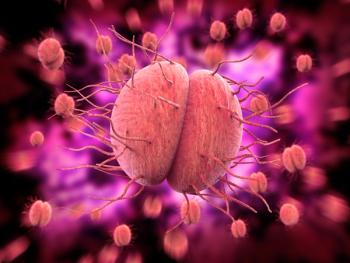
AAP offers interim guidance for pediatric practice safety guidelines
As more children return to the pediatric office, the need to create safety protocols is imperative. The American Academy of Pediatrics (AAP) has created guidance for developing them.
The American Academy of Pediatrics has updated their interim guidance for testing children for COVID-19, infection control, and personal protective equipment (PPE) protocols.1 The guidance also stresses that understanding of the disease is constantly changing and the guidance may continue changing in the future.
The overarching guidance includes:
- Practices that ensure appropriate personal protection equipment, good hand hygiene practices, disinfection protocols, and optimal physical distancing.
- Clinicians using their judgment to determine if PPE is needed for some procedures, or implementing creative solutions.
- Practices having infection control protocols written down and consistent with federal, state, and/or local public health guidelines.
- Practice staff who are risk of severe COVID-19 and those with family members at severe risk being given the highest protective level of PPE available to the office.
- Staff that should be trained on how to use PPE. Procedures for putting on and taking off PPE should be practiced.
The guidance next addressed risk mitigation strategies and PPE. It addresses the fact that medical-grade PPE is in short supply in many areas of the country, which has led to the need to reusing such equipment. It recommends that practices define the rules for extended use and reuse during care. It also recommends disinfection, creating physical barriers, setting up paths for patient flow, and increasing air ventilation. There are also recommendations for what PPE to wear in common situations:
- An asymptomatic patient with an unknown status: Clinicians should wear masks, eye protection, and gowns. These can be worn all day, as long as they are not soiled or contaminated. Reusable items should be sanitized at the end of the day. Gloves should be changed between patients.
- A patient with a COVID-19-compatible illness: The clinician should remove and dispose gloves and gown between patients. Goggles or face shields should be sanitized between the patients. Masks should be switched between patients unless the clinician is also wearing a face shield or another mask.
- Performing an aerosol-generating procedure: Clinicians should use the highest available level of personal protection equipment and reuse of that equipment should follow the policies set for care of children with a COVID-19-compatible illness.
The guidance also recommends that practices have hand sanitizer available for all patients and families that enter the practice. Practices should also require all patients aged ≥2 years and families wear face coverings and ensure physical distancing when possible.
Reference
1. American Academy of Pediatrics. Guidance on the use of personal protective equipment (ppe) for pediatric care in ambulatory care settings during the SARS-CoV-2 pandemic.
Newsletter
Access practical, evidence-based guidance to support better care for our youngest patients. Join our email list for the latest clinical updates.









